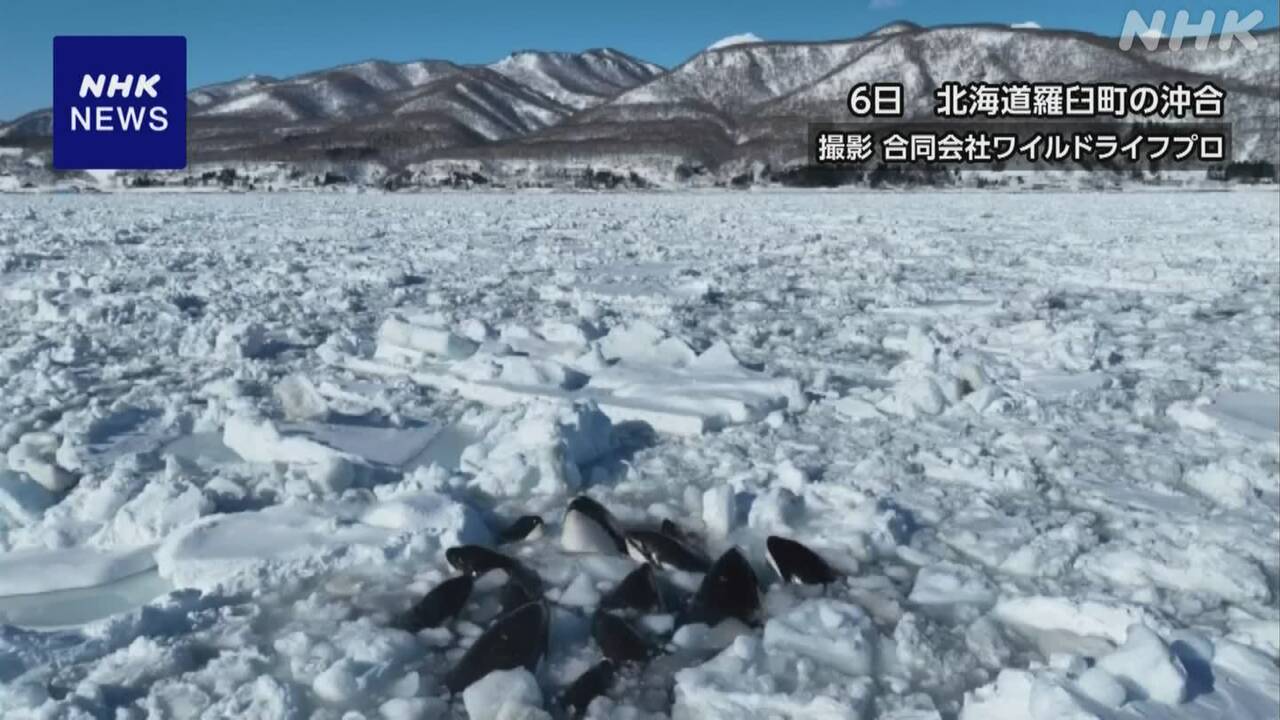On the 6th, a pod of killer whales was trapped in drift ice off the coast of Rausu Town in eastern Hokkaido, but on the 7th, they were no longer seen. The town says, ``We believe they were able to escape because the densely packed ice floes loosened.''
On the 6th, a pod of more than 10 orcas trapped in drift ice off the coast of Rausu town was photographed by a drone taken by a private company that was conducting research on sea lions and other animals.
Professor Mari Kobayashi of the Tokyo University of Agriculture, who saw the video, said that there were also baby killer whales in the group, adding, ``Because the killer whales were surrounded by drift ice, they were unable to find a place around them to take their heads out of the water and take a breather.'' "I don't think they can leave children with poor swimming skills behind," he said.
In response to this, Rausu Town dispatched staff twice on the 7th, once in the morning and once in the afternoon, to check on the situation at the scene, and found that the killer whale was no longer visible from land.
According to the town, on the morning of the 7th, the densely packed drift ice seemed to have loosened somewhat, and ``We don't know for sure, but the killer whale may have been able to escape from last night to Kesae.'' I'm talking to you.
According to the Kushiro Local Meteorological Observatory, a wide area around the site is still covered in drift ice that has been carried south by ocean currents.

